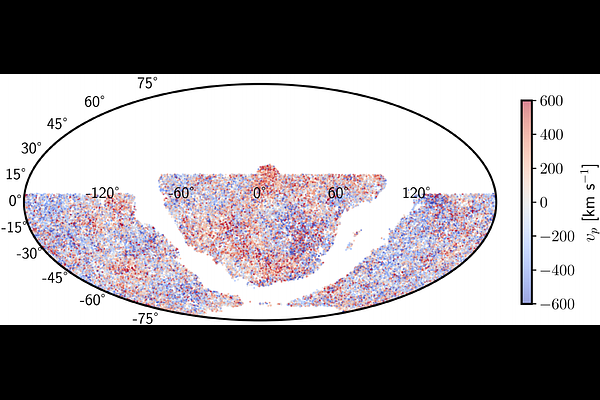Type Ia supernova growth-rate measurement with LSST simulations: intrinsic scatter systematics

Type Ia supernova growth-rate measurement with LSST simulations: intrinsic scatter systematics
Bastien Carreres, Rebecca C. Chen, Erik R. Peterson, Dan Scolnic, Corentin Ravoux, Damiano Rosselli, Maria Acevedo, Julian E. Bautista, Dominique Fouchez, Lluís Galbany, Benjamin Racine, The LSST Dark Energy Science Collaboration
AbstractMeasurement of the growth rate of structures ($\fsig$) with Type Ia supernovae (\sns) will improve our understanding of the nature of dark energy and enable tests of general relativity. In this paper, we generate simulations of the 10 year \sn\ dataset of the Rubin-LSST survey, including a correlated velocity field from a N-body simulation and realistic models of \sns\ properties and their correlations with host-galaxy properties. We find, similar to SN~Ia analyses that constrain the dark energy equation-of-state parameters $w_0w_a$, that constraints on $\fsig$ can be biased depending on the intrinsic scatter of \sns. While for the majority of intrinsic scatter models we recover $\fsig$ with a precision of $\sim13 - 14\%$, for the most realistic dust-based model, we find that the presence of non-Gaussianities in Hubble diagram residuals leads to a bias on $\fsig$ of about $\sim-20\%$. When trying to correct for the dust-based intrinsic scatter, we find that the propagation of the uncertainty on the model parameters does not significantly increase the error on $\fsig$. We also find that while the main component of the error budget of $\fsig$ is the statistical uncertainty ($>75\%$ of the total error budget), the systematic error budget is dominated by the uncertainty on the damping parameter, $\sigma_u$, that gives an empirical description of the effect of redshift space distortions on the velocity power spectrum. Our results motivate a search for new methods to correct for the non-Gaussian distribution of the Hubble diagram residuals, as well as an improved modeling of the damping parameter.